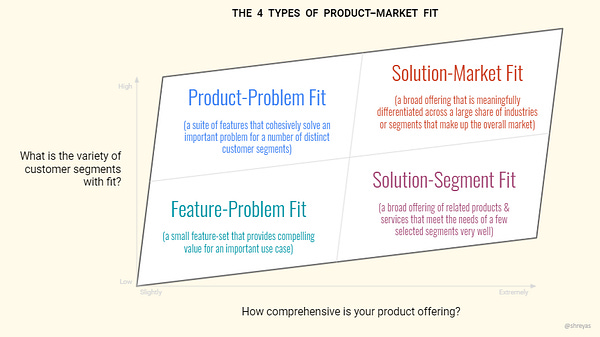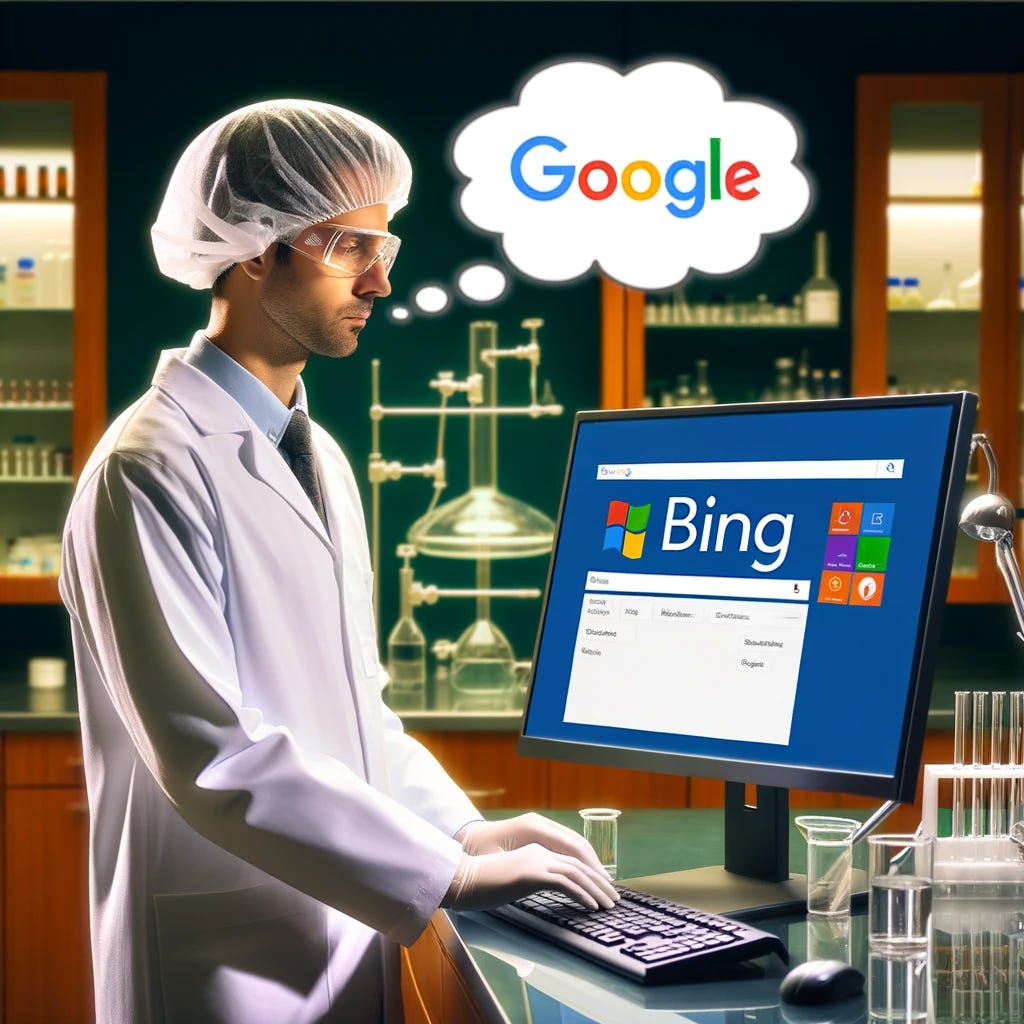Learnings from Working with Enterprise Customers on a Consumer-focused Product
Reflecting on Bing at Work| Lessons Learned and the Road Ahead
As I reflect on my six-year journey with Microsoft Search in Bing1 (formerly known as Bing at Work which is how I will reference it throughout this article), an innovative comprehensive workplace search product for enterprises, I find myself amazed by the wealth of experiences and learnings I've gathered along the way. As a product manager, I joined the team on day 15 and have since witnessed our Daily Active Users (DAU) skyrocket from a single user to over a million. I've been honored to work with over 200 enterprise customers, navigating through successes, challenges, and countless lessons learned.
Recently, I had the opportunity to share my insights with all the PMs in the Bing organization. The enthusiastic response inspired me to extend these reflections to a broader audience. In this blog post, I invite you to join me as I reminisce about key learnings from each year of my journey and shed light on the growth and development of Bing at Work.
Year 1: Persona Segmentation is Key
In our first year, we set up a goal to recruit one hundred top enterprise customers for Bing at Work. Initially, we struggled to onboard customers, as our initial pitches targeted the search admin persona. But everything changed at our annual tech conference Ignite that year,2 where our then-product lead gave an amazing demo of Bing at Work.
We discovered a persona in the audience that the demo resonated with. These were the IT decision-makers who we were not catering to until that point in time.
This key persona could see the potential of Bing at Work and the opportunity cost of not adopting this revolutionary technology.
We quickly adjusted our strategy to focus on IT decision-makers and catered to their unique needs and concerns. Our conversion rates spiked! 🚀
By the end of the year, we had not only achieved our initial goal of one hundred customers but exceeded it by onboarding 185 customers. Eventually, many of them even participated in a Total Economic Impact study independently facilitated by Forrester to help quantify the significant productivity savings of their employees using Bing at Work.3
Key Learning: Identify and cater to the right personas based on the stage of your product.
Year 2: Finding Product-Market Fit (PMF)
Shreyas Doshi, a seasoned product veteran, talks about four types of PMF: feature-problem fit, product-problem fit, solution-segment fit, and solution-market fit. As a PM, you need to constantly assess which type of fit you have achieved and which one you need to pursue next.


During year two, Bing at Work needed to identify what type of PMF it was geared towards. It was an intelligent secure search experience for Office 365 and Microsoft 365 users that used AI and Microsoft Graph to deliver more personalized relevant search results based on the organizational context.4 The initial offering, however, retrieved information from Microsoft 365 applications only like SharePoint and OneDrive. I like to think of us starting in the Product-Problem Fit segment where we were serving the needs of many segments but not all.
Working with the search admin persona this time played a crucial role in establishing product market fit for us. 🤝 It revealed that enterprises wanted more, specifically the ability to access content from non-Microsoft sources for a comprehensive workplace search engine.
We realized that our success depended on us delivering multiple enterprise grade feature gaps like connectors, relevance, coherence with quality to move from Product-Problem Fit to the Solution-Market Fit category.
Key Learning: Establishing product-market fit and understanding which type of fit to cater to is critical early on.
Year 3: Perception Trumps Reality
In our third year, we were focusing on growing user adoption in non-tech sectors like pharmaceuticals. To that effect, a few of us conducted site visits to facilitate end-user focus groups. Initially, everyone that we met shared the same sentiment “No uses Bing in our organization”, or “Bing - what is that?”.
What we learned during the workshops while watching the end users though was groundbreaking. 💡
It turned out that everyone in the study was using Bing.
It was the default search engine on their default Internet Explorer (IE) browser on their Windows machines, but they were completely unaware and “assumed” it was Google.
End users in those enterprises had associated the word search with Google.
This limited brand awareness led us to pivot and focus on driving user adoption for Bing at Work and articulating our value proposition.
Key Learning: Perception Trumps Reality; Focus on clear value propositions and brand awareness.
Year 4: Importance of Company Branding and Security
Security and privacy are the holy grail for enterprises, and rightfully so since workplace searches might be sensitive. Our team spent countless hours initially adding trust measures5 to ensure there was no query leakage.
As we engaged more with enterprises though, we realized that internal branding was also of paramount importance.
Companies invest heavily in promoting their internal brand and training employees to use it, making them hesitant to introduce new portals, especially those with non-company branding. 💼
We iterated on several experiments to integrate more of the enterprise’s branding into all our key products to regain customer confidence.
Key Learning: Branding and security are both crucial for enterprises; Design features with these aspects in mind.
Year 5: Innovation is Always Sought Out by Enterprises
Throughout my time working with enterprise customers, I have observed their constant desire for more innovation. Initially, they sought AI-powered search results, and now they are looking toward generative AI. 🤖
When Bing at Work was first unveiled in 2017, enterprises got excited about using “powerful” semantic search over the typical “painful” lexical search for their workplace search that they were historically used to.
“It didn't just do a keyword match. It understood the meaning of what I was asking, and it found the right answer, the pertinent information for a specific paragraph in a specific document and answered my question right there.”
Innovating creatively about how to deliver the most relevant search results to enterprises has been our guiding principle since then.
Now in 2023, with Microsoft Copilot and Business Chat on Bing6, enterprises are excited again to leverage the power of large language models (LLMs) with their data in the Microsoft Graph and the Microsoft 365 apps to enhance the productivity of the workforce 10x (or maybe even 100x if we're feeling ambitious!).
Key Learning: Continuously innovate and stay ahead of the curve to meet the demands of enterprise customers.
To conclude, my incredible journey with Bing at Work has taught me that identifying the right personas, establishing product-market fit, and continuous innovation are key to a successful enterprise search solution. With new features like Copilot and Business Chat on Bing, we're equipped to help businesses enhance productivity further.
Don't forget to subscribe and stay updated as I intend to delve deeper into the world of enterprise innovation in future posts.
https://learn.microsoft.com/en-us/microsoftsearch/overview-microsoft-search-bing
https://rcpmag.com/articles/2017/09/29/bing-for-business-microsoft-ai.aspx
https://query.prod.cms.rt.microsoft.com/cms/api/am/binary/RWByEY
https://blogs.bing.com/search/2017-09/finding-what-you-need-at-work-just-got-easier-with-bing-for-business
https://learn.microsoft.com/en-us/microsoftsearch/security-for-search#microsoft-search-in-bing-protects-workplace-searches
https://news.microsoft.com/reinventing-productivity/






